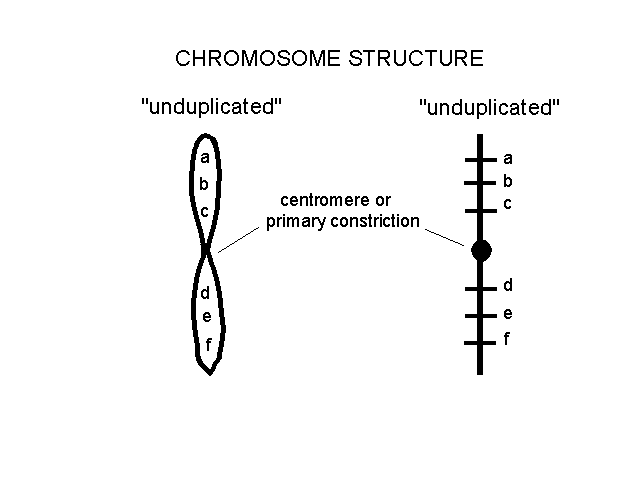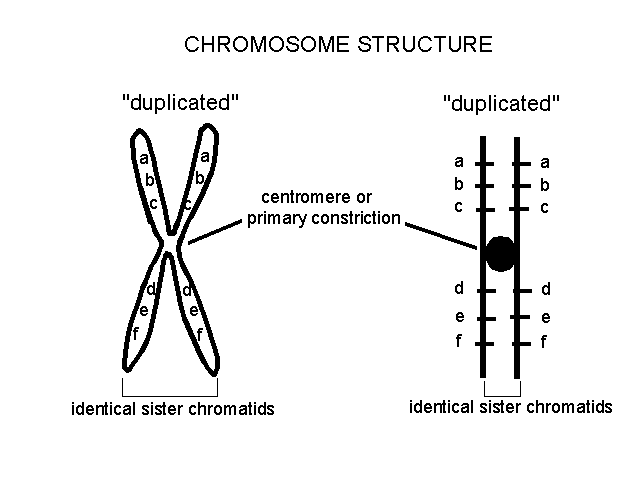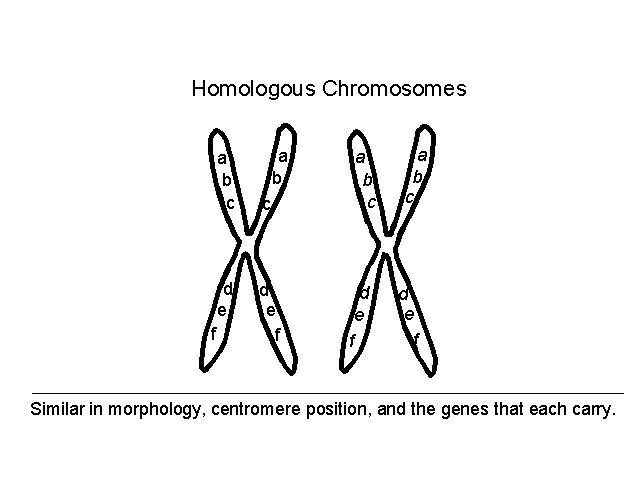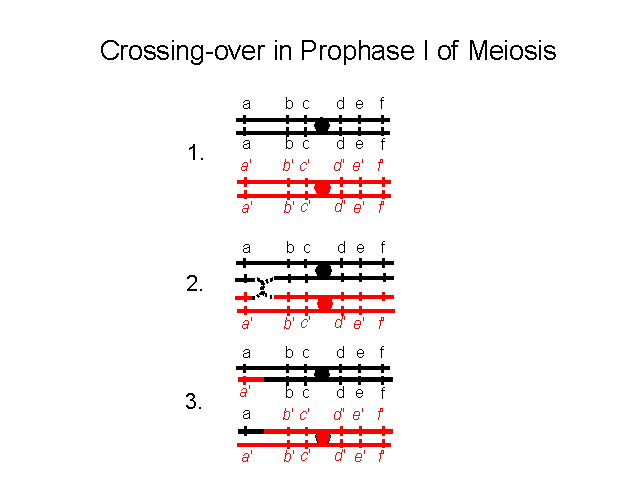
BIOL 1013 - BIOLOGY OF THE CELL
The following text and material represent a copy of some of my notes that formed the basis of some of my lectures given during the third portion of the Biology of the Cell (BIOL 1013) course. Please refer to your own notes, handouts, and to the textbook (essential cell biology, 2nd edition, by Alberts, et al. 2004 - reading assignments are in the syllabus) for additional information. If you note any errors in the following document, I'd appreciate it if you would bring this to my attention. Email address: mhuss@astate.edu
CELL CYCLE AND CELL DIVISON- For additional information refer to Chapters 19 & 20 in the textbook.
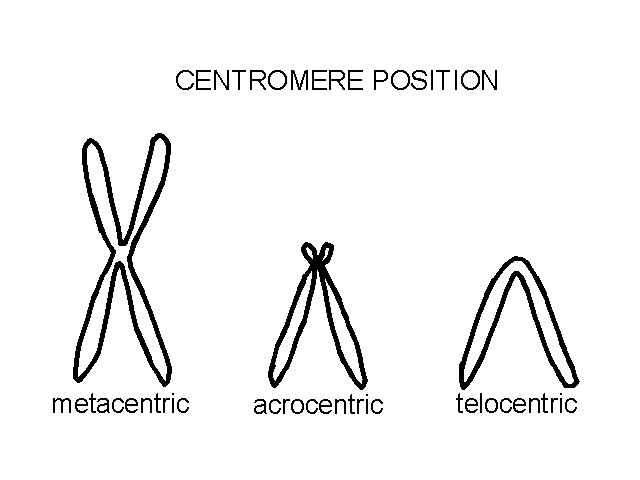
|
MENDELIAN GENETICS - Review Chapter 20 in the textbook, the text and links provided below.
Genetics (Biology of Heredity): A Unifying Theme in Biology
THE BASIS OF HEREDITY - HYPOTHESES FOR THE MECHANISM OF HEREDITY
1. Pangenesis - A hypothesis supported to some degree by Darwin to explain the hereditary process, involving the passage into the gametes of a gemmule from each part of the body, conveying information about the exact nature of that body part. Not supported by experimental data! Rejected view!
2. Blending Inheritance - the pre-Mendelian concept that progeny resulted from a blending of the traits of two sexually reproducing parents, with consequent loss of genetic variation on which natural selection could act. Not supported by experimental data. Blending Inheritance was also considered by Darwin and his contemporaries as a means for explaining how traits were inherited. Rejected view!
3. Particulate theory of inheritance - the theory, derived from Mendel's research, that characters are inherited as if they were particles, separating independently into gametes so that each variant of a character is maintained in a population in the absence of evolutionary change. Supported by experimental data!!! Accepted view!
| THE PATTERNS OF INHERITANCE
Gregor Mendel 1865 - founder of genetics (science dealing with heredity) - work was not appreciated until rediscovered 35 years later.
Peas are self-pollinating and self-fertile. Consequently plants were "true-breeding" because of repeated selfing or inbreeding (reduces genetic variation in a family line). Gregor Mendel looked at seven different sets of characters or traits. |
|
Self-pollination prevented by removing stamens. Crosses
facilitated by transferring pollen to stigma and flowers covered with
bags to prevent insect pollination.
MENDEL'S MONOHYBRID CROSS P1 Purple flowering plant X White flowering plant F1 All offspring produce purple flowers F2 705 Purple flowering plants and 224 white flowering plants How did Mendel explained or interpret the results? UNIT CHARACTERS - He concluded that factors (genes) controlled a particular trait and that these came in pairs (alleles - different forms of the same gene) DOMINANCE - Mendel recognized that alleles could be dominant or recessive. P1
Purple flowers X White flowers F1
All offspring have purple flowers F2 705 Purple flowering plants:224 White flowering plant OR approximately a 3:1 ratio PRINCIPLE OR LAW OF SEGREGATION - Paired factors (genes) separate during formation of gametes. Homozygous Dominant
Heterozygous
Homozygous Recessive Chromosomal basis for explaining Mendel's results: different alleles for paired genes occur within a homologous pair of chromosomes |
MENDEL'S DIHYBRID CROSS WITH PEA PLANTS
All Purple flowers and Yellow seeds (PpYy)
[PpYy X PpYy]
Possible gametes could carry: PY
or Py or pY
or py
Phenotypes that result include: 9:3:3:1 or 9 Purple/Yellow: 3 Purple/Green:3 White/Yellow: 1White/Green.
These phenotypes result from the following genotypes (blanks can represent a dominant or recessive allele, doesn't matter). 9 P__Y__: 3 P__yy: 3 ppY__: 1 ppyy
PRINCIPLE OR LAW OF INDEPENDENT ASSORTMENT - The dihybrid cross demonstrated that factors controlling two or more contrasting pairs of characteristics segregate independently and that gametes combine at random.
The law of independent assortment worked for Mendel, because each trait is controlled as though genes occurred on different homologous pairs of chromosomes, and the fact that homologues assort independently during meiosis.
BEYOND MENDELIAN GENETICS (What Mendel didn't know!)
Incomplete dominance - blending inheritance resulting from neither allele masking the expression of the other allele (Snapdragon plants - Red flowered plants R1R1 crossed with white flowered plant R2R2 yield progeny with pink flowers ===> R1R2). A cross between two heterozygous plants for flower color yields a 1:2:1 genotypic and phenotypic ratio! To confirm these findings perform a Punnett square and check it out.
CODOMINANCE - both alleles are expressed (e.g., A and B antigens on red blood cells (RBCs) in humans for someone who has a blood type of AB; individuals heterozygous for two isozymes - alternate forms of the same enzyme - both are expressed).
ABO blood typing ===> three alleles ===> IA, IB or i (the null allele). Each allele causes the production of a membrane-bound protein or antigen.
| Gentoypes IAIA or IAi yields TYPE A blood phenotype => body's immune system produces no anti-A antibodies. |
| Genotype IAIB yields TYPE AB blood phenotype = body's immune system produces no anti-A or anti-B antibodies = UNIVERSAL RECIPIENT (can receive blood from anybody) |
| Gentoypes IBIB or IBi yields TYPE B blood phenotype => body's immune system produces no anti-B antibodies. |
| Genotype ii yields TYPE O => No surface protein or antigen present - human body produces anti-A and anti-B antibodies - UNIVERSAL DONOR (can donate blood to anyone). |
Rhesus or Rh factor is a separate antigen found in the cell membrane. Its presence makes a person positive (+), its absence makes that person negative (-). Understanding the underlying basis of blood typing can be useful in: matching donors to recipients for blood transfusions, paternity suits, and criminal cases (where bodily fluid is left at the scene of the crime).
Example: A type B woman accuses a type O man of being the father of her child. Is it possible for the the accused man to be the father of the child, if he is type A? No! The child must receive at least one IA allele from one of the two parents. This allele could not have come from the mother (she does not possess this allele), so it must have come from the father. The accused man is type O, so his genotype is ii. He can not be the father of the child.
Blood typing can only eliminate individuals, but matches required further genetic testing (e.g., DNA fingerprinting) to confirm biological relationships.
Finally among humans, i is the most common allele, surpassing the incidence of alleles, IA and IB. Therefore, just because an allele is recessive, does not necessarily mean that it is less common compared to dominant alleles.
Sex linkage and Gene linkage - Refer to Thomas Hunt Morgan's experiments on fruit flies (Drosophila melanogaster): Examples of sex-linked phenotypes in humans resulting from the expression of a specific allele occupying a locus on a sex chromosome include: hemophilia (a blood-clotting disorder) with the gene located on the X chromosome; hairy ears in males with the gene located on the Y chromosome.
MENDELIAN GENETIC PRACTICE PROBLEMS - GO TO TOP OF PAGE AND VISIT THE LINK LISTED TO PRACTICE THE PROBLEMS GIVEN IN THE MENDELIAN GENETICS - PROBLEM SET; CHECK YOUR ANSWERS BY VISITING THE LINK TO SOLUTIONS TO MENDELIAN GENETICS PROBLEMS.
EPISTASIS - interactions of one gene with other genes can mask the effect of other genes. Modifier genes
Albinism - complete absence of melanin (a pigment located in hair, fur, skin, feathers, etc.).
Series of biochemical reactions lead to formation of melanin. If the enzyme tyrosinase is not produced due to a mutation in a gene then no melanin can form. The result is an albino animal.
Chemical precursors ====> =====> ====> tyrosinase ======> =====> melanin
Albinism has been observed in white rabbits, laboratory mice, humans, squirrels (such squirrels occur in Jonesboro - personal observation), deer (female deer or doe sighted by student near northeast Arkansas in Fall 2003), moose, ravens, kangaroos, etc.
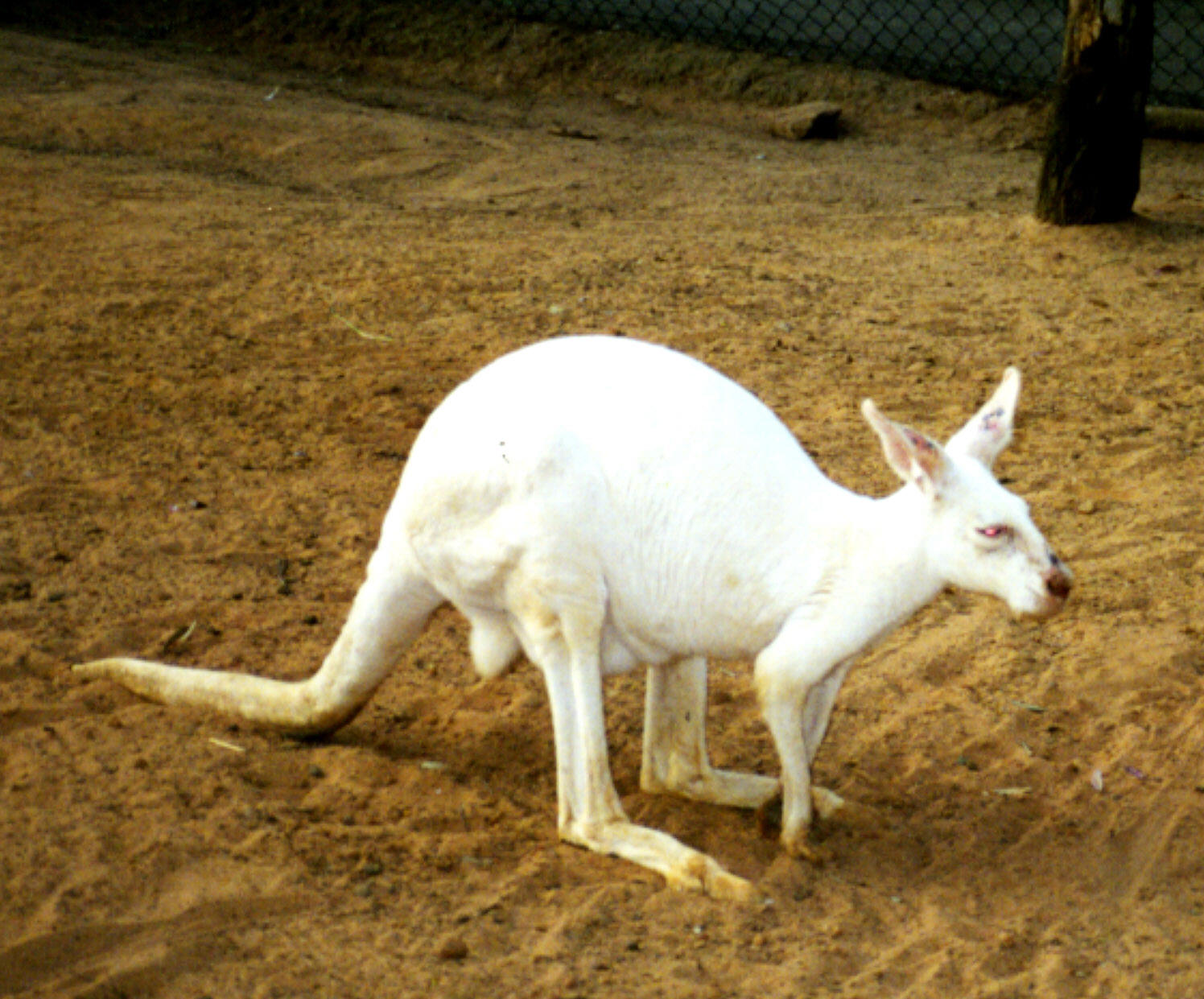
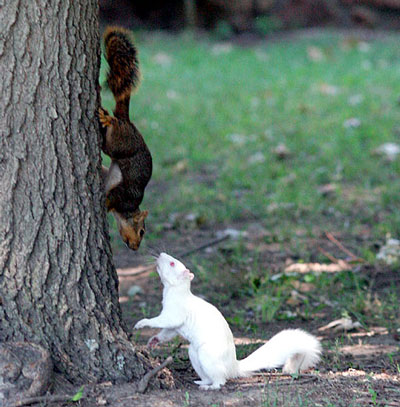
An albino kangaroo from Australia - photograph by B. Buerkle (2000); Albino Squirrel and normal squirrel - photograph from http://gargles.net/wp-content/uploads/2006/07/albinosquirrelhy4.jpg.
PLEIOTROPY - gene expression where one gene exerts effect on seemingly unrelated aspects of an individual's phenotype. Example: Sickle cell anemia and cystic fibrosis.
sickle-cell anemia ===> disease is result of a single gene that has mutated (hemoglobin).
HbA (normal hemoglobin vs. HbS - sickle cell type hemoglobin (due to one amino acid substitution) ===> Both types of protein can be discriminated from one another by how fast they travel through a gel subject to an electrical field (electrophoresis).
POLYGENIC EXPRESSION OF TRAITS: Many phenotypes are the result of many genes interacting with one another.
EFFECTS OF THE ENVIRONMENT ON GENETIC EXPRESSION
Himalayan rabbits and siamese cats (fur on extremities are black, rest of body fur is white to gray in color). Melanin is the pigment deposited in fur that creates dark fur. Melanin production requires a temperature sensitive form of tyrosinase.
ct = recessive allele for gene producing temperature-sensitve form of tyrosinase
ctct ===> warm ===> no pigment
ctct ===> cold ===> pigment present
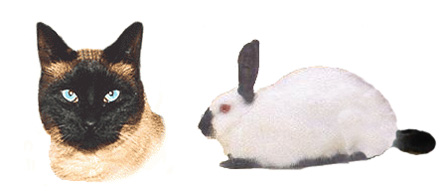
Interaction of genes with genes and the genotype with the environment that leads to the phenotype (observable traits). For example, identical twins share the same genotype but are seldom identical in all respects due to the influence of the environment on their growth and development. In another example, people on average, are taller today than they were one hundred years ago due to better nutrition, not due to better genes!
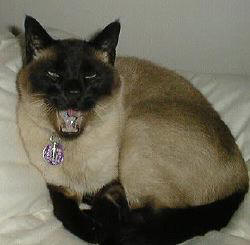
FINAL COMPREHENSIVE EXAM - May 2, 2008 FROM 8:00-10:00 AM
